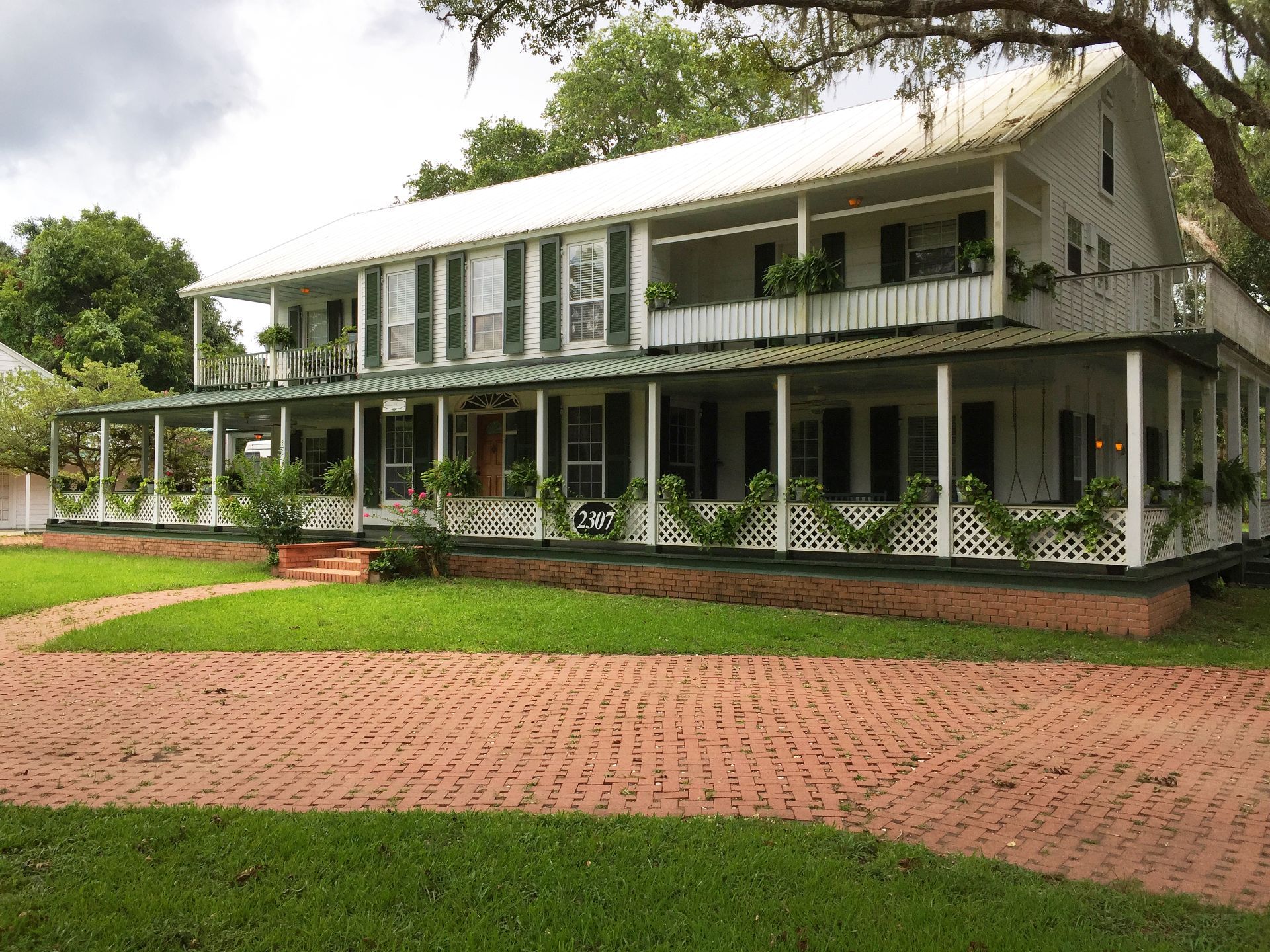
Valcour Verandas is an owner built home started at the peak of the owner-builder era in Texas. This home has proven its energy efficiency. With 4,000 square feet inside, the entire house is heated/cooled with a water source heat pump located inside that draws 10 amps at 240 volts … only 2400 watts and that includes the well pump that provides the water. Two of the little portable space heaters use more power than that. It has to be 98 degrees outside with my wife cooking a big dinner to have the AC stay on continuously. We have held over 30 weddings at our house and 100 guests do not overheat the house if we chill it down to 68 starting in the morning. This energy efficiency was achieved without using any of the currently popular techniques for home energy efficiency. Paying close attention to the local Texas coastal climate (including where the trees were on our lot) was the the foundation of energy use decisions (for instance, cold winter days are very rare).
A large owner-built home is a project totally different than a traditional professional build. It takes a LOT longer to finish. But the flip side is you can make all the changes you want as you proceed; as you learn. We completed one fifth of the house in the first 6 months… kitchen, dining room, utility+bathroom. With a bed and table in the dining room we had a great 480 sqft ‘tiny house’ inside our 4,000 sqft big house. So after we moved in, working on the other rooms (plumbing, electric, heating, cooling, walls ceilings, floors, stairways, attic) and the unfinished outside (siding, roofing, stairs, driveway, verandas) was a 20 foot commute each night and every weekend. We had 5 acres outside the city limits we could do almost anything we wanted to do. No inspector ever showed up. My job as a power plant engineer gave me a lot of experience with heat transfer. And living in a beach house for 3 years revealed the reality of heat conduction, convection, and radiation in south Texas. I learned that in the hot sunny Texas coastal climate, radiation was a huge contributor to making my beach house hot inside. Conduction not so much. The ocean breezes doing the convection were often really nice at cooling the house heated by the hot sand and hot sun, since the Gulf of Mexico was usually 10-15 degrees cooler than the air in spring and early summer. Hurricanes can destroy a house when you live 25 miles from the shoreline. The walls are sheathed with ½” plywood that is glued the full length of every stud and plate and stapled every 6 inches. This makes a diaphragm the will not be moved by the strongest hurricane. And no convection (or bugs) can get through. The roof uses 36 foot trusses that have plywood sheathing also glued and stapled. The roof was built on the driveway and lifted onto the second floor top plates with a rental crane. The roof has no holes in it, no chimney, no vent pipes, nothing to leak. The original widows were single pane aluminum due to budget constraints. They have been replaced with double pane vinyl windows. Nothing more is needed. At Galveston, the average of cold day temperatures is 50. The average of hot day temperatures is 87. So our windows see an average of about 20 degrees difference in winter and summer. There is never a return on investment from spending hundreds of dollars more on a high R value window.
Fine Homebuilding Recommended Products
Fine Homebuilding receives a commission for items purchased through links on this site, including Amazon Associates and other affiliate advertising programs.

Pretty Good House

The New Carbon Architecture: Building to Cool the Climate

Musings of an Energy Nerd: Toward an Energy-Efficient Home






























